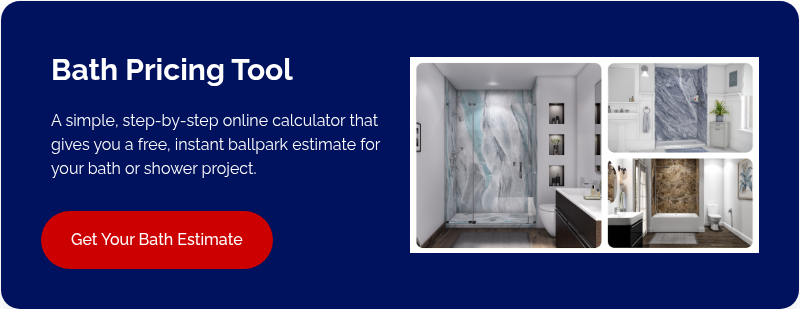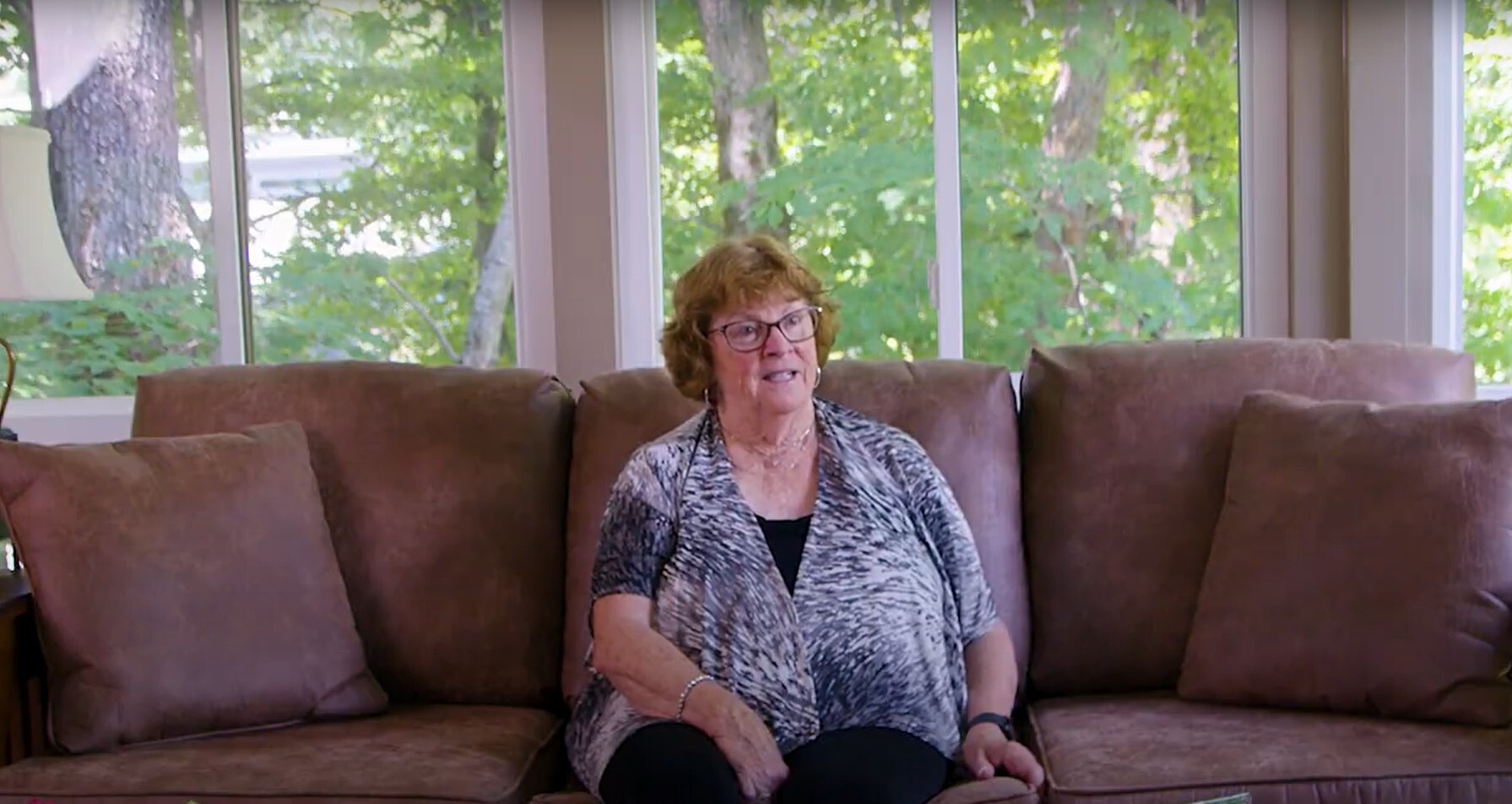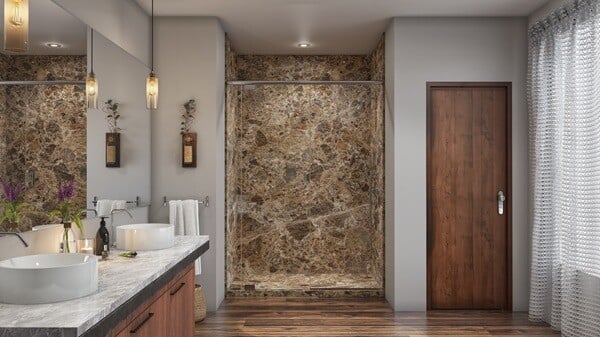Should One Person Do Your Entire Bathroom Remodel? Pros, Cons & Cost
October 31st, 2025
4 min read
By Shari Rogala

You’re juggling color samples, fixture finishes, and contractor quotes, wishing there were a simple way to “book the whole trip” with one person.
Since 1955, Joyce Windows, Sunrooms & Baths has helped tens of thousands of homeowners navigate that exact moment. As a factory-direct, family-led company, we’ve seen what leads to smooth projects (and what causes headaches). Our trained specialists focus on the parts of a bathroom that matter most for performance and longevity, providing clear guidance, realistic timelines, and results that last.
Bathrooms cram plumbing, waterproofing, electrical, and design into a tiny, high-stakes space. It’s tempting to hire a single do-it-all pro and call it done. But here’s why that one-person approach often leads to delays and regrets, and why locking in your wet area (shower/tub walls, base, waterproofing, and fixtures) first can be the smartest itinerary you can make.
The Travel Analogy: Book the Flights First, Then Plan the Fun
Think of your bathroom like a vacation. You can’t really plan restaurants and tours until your flights are booked. Flights set your dates, budget, and arrival and departure times; everything else falls into place around them.
In your bathroom, the wet area is the flight: it’s non-negotiable, time-critical, and drives the success of the entire “trip.” When the shower or tub is solid, properly waterproofed, beautiful, and easy to clean, every other choice (vanity, paint, lighting, décor) becomes flexible, fun, and far less risky.
Flight-first planning = wet-area-first remodeling:
- Secure waterproofing, wall system, base/tub, valves, and glass doors or shower curtain.
- Confirm layout details (niches, grab bars, shower heads) before anything else.
- Build the rest of your itinerary (finishes) confidently around that anchor.

Why One Person Doing Everything Can Derail Your “Trip”
A single contractor trying to handle every trade is like asking one travel agent also to fly the plane, run the hotel front desk, and lead the food & wine tour.
- Skill gaps: Waterproofing, plumbing, electrical, and finish work are distinct specialties.
- Bottlenecks: If that one person is delayed, your whole project misses its “connection.”
- Limited warranties: Solo operators may not offer robust, product-plus-labor coverage.
- Hidden risks: Tiny mistakes behind walls (think: a bad valve or seam) can turn into costly “trip cancellations” later.
- Scope creep: Without a clear wet-area plan, add-ons balloon like baggage fees.
Overall Budget: Why Splitting the Project Can Save Real Money
The biggest reason to split the project (wet area first, finishes later) is cost control. When you pay for a full bathroom remodel, you’re paying a premium for the convenience of one party managing everything.
- Typical full-bath remodel: often $25,000+.
- Wet area (specialist install): customers commonly see $9,000–$15,000 for a quality shower/tub system.
- The “rest of the room” materials (typical ranges):
- Toilet: $200–$300
- Vanity: $500–$1,200
- Mirror: $50–$150
- Lights: $100–$200
- Paint: $100–$200
- Flooring materials: $4–$12/sq ft (area dependent)
Estimated materials subtotal: about $1,400–$2,500 (flooring size may change this)
Rule of thumb for installed cost: materials × ~2 ⇒ $2,800–$5,000 for the non-wet-area portion
- Toilet: $200–$300

Put together: Many homeowners end up around $12,800–$20,000 by doing the wet area right and handling the remainder strategically, versus ~$25,000+ with a one-shot full remodel. That’s a potential savings of $5,000–$10,000, while often achieving better wet-area performance. (Actual costs vary by market, scope, and selections.)
Also, full-remodel firms often limit you to tile or fiberglass and may not offer exclusive options like SignatureStone, which carry strong lifetime warranties, for many customers, that makes splitting the project a no-brainer: more value, better product, smarter spend.
5 Reasons to Start Your Bath Remodeling with the Wet Area
1) It Sets the Schedule
Like flight times, wet-area lead times, and install windows dictate everything else. Secure them first to avoid chaos down the line.
2) It Anchors the Budget and Gives You Cost Control
The shower/tub system is where performance lives. Price and quality decisions here dictate how much you can comfortably spend on the “excursions” (vanity, lighting, mirrors).
3) Highest Daily ROI
You “use” this destination every day. A durable, low-maintenance wet area pays off in comfort and cleaning time from day one.
4) Moisture = Weather Risk
Water is the unpredictable weather of bathrooms. Professional waterproofing prevents storms (mold, swelling trim, tile failure) that can ruin the trip.
5) Immediate Visual Upgrade
The shower is your skyline or majestic view. Nail it, and even modest finishes around it feel elevated.
What a Specialized Wet-Area Team Delivers (Your Pilot & Ground Crew)
- Integrated waterproofing system (substrate, membranes, sealants) that works together, not a patchwork of products.
- Right-fit materials (stone-look composites, solid surface, acrylic, or tile) matched to durability and cleaning needs.
- Precision plumbing (valve height, drain slope, pressure balancing) for long-term performance.
- Clean transitions & glass that look seamless and stay that way.
- Real warranties covering both product and craftsmanship on the part that matters most.

When a One-Stop Team Can Work (Think: Guided Tour)
- Full gut with layout changes where a coordinated crew (not one person) manages every trade on a tight schedule.
- Single-source warranty you can verify in writing for materials and labor.
- Documented wet-area lead on the team, your “pilot in command” for waterproofing and plumbing.
Quick Bath Remodeling FAQs
Q: If I upgrade only the shower, will the rest look mismatched?
A: Usually the opposite. A modern, clean wet area refreshes the whole room. You can “sightsee” the rest later, paint, vanity, and lights, without feeling incomplete.
Q: Which lasts longer, tile or composite wall panels?
A: It depends on the product and the install. Quality tile with proper waterproofing can be very durable, but it needs grout upkeep. Premium composite or solid-surface panels resist staining, avoid grout maintenance, and install faster. Performance stays high when seams and valves are correctly sealed.
Q: Can I keep my existing tub or base?
A: Sometimes. A specialist will check the condition, slope, and compatibility with new wall systems and glass.
Plan Smart: Start with the Wet Area
Don’t plan your bathroom like a last-minute trip where one person promises to do it all. Book your “flights” first, prioritize the wet area with specialists, then plan the fun parts around it.
SignatureStone by Joyce is a great “flight-first, First Class” choice for the wet area. Our engineered, stone-look wall panels are thick, durable, and grout-free, pairing with professional waterproofing and precision plumbing for a clean, low-maintenance finish. Installed by trained specialists and backed by strong warranties, SignatureStone helps you lock in the most critical part of your remodel quickly and confidently, so the rest of your “itinerary” can follow without costly detours.
You’ll control the schedule and budget, avoid surprises, and “arrive at” a bathroom you love using every day. Ready to anchor your project around a high-performing wet area? Schedule your free in-home consultation today with a bath expert from Joyce.
Shari Rogala is the Marketing Content Manager at Joyce Windows, Sunrooms & Baths, where she brings near two decades of experience in customer-first marketing strategy and home improvement communications. With a passion for helping homeowners make confident, informed decisions, Shari specializes in creating clear, educational content that cuts through industry jargon and high-pressure sales tactics.



